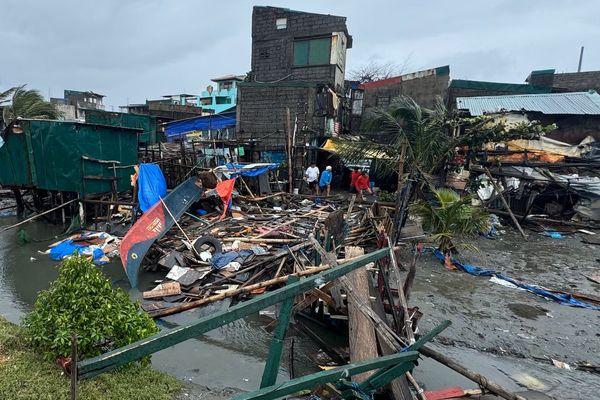
It is clear now that there will be no sweeping gains from Ukraine’s counteroffensive. While it has not failed, it has in no way resembled the kind of swashbuckling victory hoped for by optimists. This should be no great surprise. It was always going to be a slog – a series of “bite and hold” operations; more first world war western front than some latterday blitzkrieg. Western officials now fairly bluntly state that there will be no breakthrough of well dug-in Russian lines any time soon. The Ukrainians are also facing a developing threat in the east, as the Russians advance in the direction of Kupiansk, a situation described as “complicated”.
As a result, something of a blame game is being played by both Ukrainians and their allies. The Ukrainians, quite reasonably, point out that rather more in the way of western (for that, read US) equipment might have made a decisive difference. Given that there are thousands of tanks, armoured vehicles and artillery systems currently in US storage and unlikely to make their way east, they have a point. Ukraine’s friends say that if only the Ukrainians had used the “combined arms” tactics in which they were (very briefly) trained, and had deployed their forces differently, more progress could have been made. Of course, the underpinning assumption behind combined arms warfare is that one of the “arms” concerned is air power, which the Ukrainians currently lack. The various re-announcements concerning F-16s heading Ukraine’s way mask the reality that they will not, effectively, be deployed in any numbers until the end of next year. British and US generals and admirals weigh in, with advice such as “starve, stretch and strike” – a catchy phrase, presumably from the same stable of media officers who gave us the vapid “clear, hold and build” slogan in Afghanistan. Ukrainian generals, who, unlike their British or US counterparts, have actually – and quite successfully – fought a conventional war, may be wise to take their own counsel.
Time is beginning to press. President Biden’s regular promise to support Ukraine for “as long as it takes” sounds good, save that we have little clear idea of what the “it” really means. Ukrainians may be forgiven for believing that “it” means “until we have achieved our war aims”, which are very clearly set out in Volodymyr Zelenskiy’s 10-point peace plan. This, among other objectives, posits the recovery of all Ukraine’s legal territory – including Crimea, named by Ukraine’s overall military commander as its “centre of gravity” and main objective. Due to the risk of Russian nuclear escalation, there is very little if any appetite in senior US government circles for assisting Ukraine to retake Crimea. Biden’s “it” does not seem to include Ukraine’s primary war aim.
If we make the (now) reasonable assumption that the war is likely to go on beyond 2024, two other increasingly pressing matters should be front and centre of western (especially European) strategists’ minds. One is inevitable, the other only highly likely. First, there is the US presidential election. During the election, the outgoing Biden administration will try to calibrate the level of support and perceived risk of escalation that an increasingly sceptical US population will accept. It is, of course, possible that a new president could completely change the strategic landscape.
Second, there is Taiwan and the wider western Pacific’s relevance to Ukraine. The chairman of the US joint chiefs of staff, General Mark Milley, declared in 2019 that the main effort of the US military will be the western Pacific. US military and intelligence officials have been consistent that a Chinese threat to Taiwan will become “manifest” before 2027. As if that wasn’t enough, there is also the constant possibility of a serious flare-up in the South China Sea, where similar considerations apply. If the war in Europe is still raging, it will be seen and treated as a sideshow. The conduct of the war would be left largely in the hands of Europe. As matters stand, this could well condemn Ukraine to defeat.
More than ever, the west needs to unite around a workable, saleable long-term plan and an achievable end state. This need not be the same as Ukraine’s. It seems this process may have begun. Recently, Stian Jenssen, director of the private office of the Nato secretary general, Jens Stoltenberg, suggested that western diplomats were beginning to consider trading Ukrainian land for Nato membership. Saying the quiet bit out loud, that could mean accepting the possibility of a deal over Crimea and Donbas. This suggestion was followed by an apology, although the idea was not ruled out. Ukraine was predictably furious, although a strong argument can be made that this is what the US is offering now, if rather more clearly expressed. Interestingly, Russia scoffed at the idea – keeping Nato out of Ukraine is a central Russian war aim.
With the war likely to go well beyond next year, we need to look coldly at not just where we are, as friends and supporters of Ukraine, but where we are likely to be in two, three or 10 years. We must also bear in mind – as Anatol Lieven pointed out in the Guardian on Wednesday, the vital fact that the enemy gets a vote.
Frank Ledwidge is a barrister and former military officer who served in the Balkans, Iraq and Afghanistan. He is the author of Losing Small Wars and Investment in Blood
Do you have an opinion on the issues raised in this article? If you would like to submit a response of up to 300 words by email to be considered for publication in our letters section, please click here.







